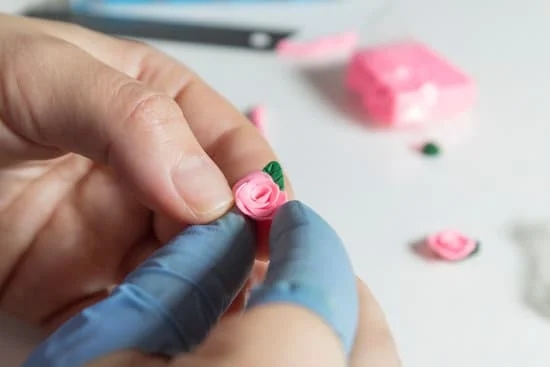The history of tribal jewelry spans across centuries, reflecting the rich cultural heritage and traditions of indigenous communities around the world. From ancient origins to its influence on contemporary fashion, tribal jewelry holds a significant place in the realm of adornment and symbolism.
This article delves into the fascinating journey of tribal jewelry, exploring its cultural significance, materials and techniques, evolution over time, regional variations, and its impact on modern trends. Join us as we embark on a captivating exploration of the enduring legacy of tribal jewelry.
Tribal jewelry has deep roots in ancient societies, where it served not only as adornment but also as a reflection of cultural identity and spiritual beliefs. The intricate designs and materials used in these pieces often hold symbolic significance, making them an essential part of rituals and ceremonies within these communities. Throughout history, tribal jewelry has evolved and adapted to changing times while retaining its traditional artistry.
As we navigate through this exploration, we will uncover the artistry behind tribal jewelry making, gain insight into the diverse regional variations found across the globe, and examine how these timeless pieces have influenced contemporary fashion trends. Additionally, we will delve into efforts to preserve the history and significance of tribal jewelry for future generations to appreciate and cherish. Join us on this enlightening journey as we uncover the vibrant world of tribal jewelry.
Ancient Origins
The history of tribal jewelry dates back to ancient times, with its origins deeply rooted in the traditions and cultures of various indigenous communities around the world. From the elaborate headdresses of Native American tribes to the intricate beadwork of African tribes, tribal jewelry has played a significant role in the identity and heritage of these societies.
Early Beginnings
The earliest forms of tribal jewelry can be traced back to prehistoric times, with evidence of shell, bone, and stone ornaments being worn by early human civilizations. These adornments often held spiritual and ceremonial significance, serving as symbols of protection, status, and cultural identity within these ancient societies.
Symbolism and Ritual
Tribal jewelry has always been deeply intertwined with the belief systems and rituals of indigenous cultures. Each piece carries its own unique symbolism, representing various aspects of nature, spirituality, or ancestral lineage. For example, Maasai necklaces in East Africa are not only decorative but also serve as indicators of marital status and social standing within the community.
Cultural Preservation
As tribal communities continue to face challenges related to globalization and modernization, there is an increasing effort to preserve the history of tribal jewelry. Organizations and individuals are working towards documenting traditional techniques, educating future generations about their cultural significance, and supporting artisanal communities in preserving their craft. This not only helps to safeguard the legacy of tribal jewelry but also ensures that these rich traditions continue to thrive for years to come.
Cultural Significance
Tribal jewelry holds a deep cultural significance that is tied to the traditions and beliefs of the communities that create and wear them. Each piece of tribal jewelry is infused with symbolism and meaning, reflecting the values, spirituality, and social structure of the tribe. These adornments are not simply decorative; they serve as powerful symbols of identity, status, protection, and ritualistic significance.
In many cultures, tribal jewelry is worn as a form of protection against negative energies or as a symbol of prosperity and fertility. For example, among the Maasai people of East Africa, elaborate beaded necklaces and bracelets are worn by both men and women as a display of wealth and status within the community. The designs and colors used in these pieces hold specific meanings related to age, social rank, and marital status.
Moreover, tribal jewelry often plays a vital role in ceremonial practices and rites of passage. Among indigenous communities in North America, intricate silver and turquoise jewelry are crafted for use in traditional dances and spiritual ceremonies. These pieces are believed to carry spiritual power and are passed down through generations as sacred heirlooms.
Finally, many symbols or motifs found in tribal jewelry carry specific meanings related to cultural myths or historical events within the community. For example, certain animal motifs may represent qualities such as strength or wisdom, while geometric patterns may symbolize balance or harmony within the natural world.
| Maasai Jewelry | Turquoise Jewelry |
|---|---|
| Elaborate beaded necklaces | Intricate silver jewelry |
| Display wealth/status | Sacred heirlooms |
Materials and Techniques
The art of creating tribal jewelry is a fascinating display of craftsmanship and cultural significance. The materials and techniques used in making tribal jewelry reflect the rich tradition and history of different indigenous communities around the world. From intricate beadwork to metalwork, each piece tells a unique story about the people who created it.
One of the most common materials used in tribal jewelry making is silver. In many cultures, silver holds symbolic meaning and is believed to possess protective qualities. From Navajo silversmithing in the United States to Tuareg jewelry-making in North Africa, silver has been a staple material in tribal jewelry for centuries. Techniques such as stamping, casting, and filigree are often employed to create stunning designs that showcase the artistry and skill of the makers.
Another significant material used in tribal jewelry is natural gemstones and minerals, which are often sourced locally. For example, Ethiopian tribes use opals and amber in their jewelry, while Tibetan communities incorporate turquoise into their designs. These materials are not only valued for their beauty but also carry spiritual or healing properties within their respective cultures.
| Material | Technique |
|---|---|
| Silver | Stamping, casting, filigree |
| Gemstones | Incorporation based on spiritual beliefs |
In addition to traditional materials, various techniques are employed to create tribal jewelry. Beadwork is a prevalent technique used by many indigenous groups, with each bead carefully crafted and arranged to form intricate patterns and designs. Wire wrapping, engraving, and weaving are also commonly utilized methods that highlight the artistry and expertise passed down through generations.
The combination of these materials and techniques not only results in visually stunning pieces but also serves as a representation of cultural identity and heritage. The intricate processes involved in crafting tribal jewelry make each piece a testament to the creativity and skill of its makers, contributing to the enduring legacy of this timeless art form.
Through understanding the materials and techniques utilized in tribal jewelry making, we gain insight into the creativity and resourcefulness of different cultures throughout history. It also allows us to appreciate the significance of these traditions within their respective communities while acknowledging their contributions to global fashion and artistry.
Evolution Over Time
Tribal jewelry has a long and fascinating history, with its origins dating back to ancient civilizations. The evolution of tribal jewelry over time is a testament to the creativity and ingenuity of different cultures around the world. From simple adornments made from natural materials to intricate metalwork and gemstone settings, the artistry of tribal jewelry has adapted and changed in remarkable ways.
The evolution of tribal jewelry can be observed through the use of different materials and techniques. Over time, artisans have honed their skills and experimented with new methods to create stunning pieces that reflect their cultural heritage. Some common materials used in traditional tribal jewelry include:
- Natural elements such as shells, bones, feathers, and wood
- Metals like silver, copper, and bronze
- Gemstones including turquoise, lapis lazuli, coral, and amber
In addition to materials, the techniques used in crafting tribal jewelry have also evolved. Traditional handcrafted methods such as casting, filigree work, and granulation have been passed down through generations. As time progressed, artisans incorporated new tools and technologies to enhance their craftsmanship.
The evolution of tribal jewelry is not just limited to its physical attributes. It also encompasses changes in designs and styles influenced by social, economic, and environmental factors. These changes reflect shifts in cultural practices, trade connections with other communities, as well as personal preferences within each tribe or community. This evolution highlights the resilience of tribal jewelry as an art form that continues to thrive in contemporary times.
Overall, the evolution of tribal jewelry demonstrates the enduring legacy of these unique adornments. By adapting and changing with the times while staying rooted in tradition, tribal jewelry remains a powerful symbol of cultural identity for many indigenous communities around the world.
Regional Variations
North America
The history of tribal jewelry in North America is as diverse as the cultures that have inhabited the continent. From the intricate beadwork of Native American tribes to the silver and turquoise pieces of the Navajo and Zuni people, each piece tells a unique story and holds deep cultural significance.
The use of materials such as feathers, shells, and animal bones in traditional tribal jewelry reflects a deep connection to the natural world and the spiritual beliefs of these indigenous communities.
Africa
Tribal jewelry in Africa is characterized by its bold colors, exaggerated proportions, and use of natural materials such as organic beads, seeds, and animal teeth. Each region within Africa has its own distinct style of jewelry, often reflecting the customs, rituals, and social status of the different tribes. For example, Maasai women in East Africa are known for their elaborate beaded necklaces and earrings, which play a significant role in their coming-of-age ceremonies and marital traditions.
Asia
In Asia, tribal jewelry varies widely from one region to another. In India, for instance, tribal communities such as the Rabari and Banjara are renowned for their vibrant textiles embellished with mirrors, coins, and intricate embroidery, often worn alongside chunky silver jewelry. Meanwhile, in Southeast Asia, hill tribe groups like the Hmong and Karen people create stunning pieces using techniques such as metal stamping and wax casting to produce intricate silver adornments.
By exploring these regional variations in tribal jewelry across different continents, we gain insight into the rich diversity of human culture and craftsmanship found around the world. Each piece not only serves as a visual expression of identity but also reflects centuries-old traditions that have been passed down through generations.
Influence on Contemporary Fashion
The influence of tribal jewelry on contemporary fashion is undeniable, as it continues to play a significant role in shaping modern trends. From runways to street style, the aesthetic appeal and cultural significance of tribal jewelry have captivated the fashion world, inspiring designers and consumers alike. Here are some key factors that highlight the impact of tribal jewelry on modern fashion:
- Unique Aesthetic: Tribal jewelry is known for its distinctive and intricate designs, often incorporating natural materials such as beads, shells, and semi-precious stones. This raw and earthy aesthetic has permeated contemporary fashion, with many designers drawing inspiration from traditional tribal styles to create bold and statement-making pieces.
- Cultural Fusion: The incorporation of tribal jewelry into modern fashion represents a merging of cultures and traditions. As global connectivity continues to grow, the appreciation for diverse ethnic influences in fashion has led to an increased presence of tribal-inspired accessories on the international stage.
- Sustainable Fashion: In an era where sustainability is a top priority for many consumers, the use of traditional crafting techniques and natural materials in tribal jewelry aligns with the growing demand for eco-friendly fashion choices. Many ethical brands are embracing the ethos of tribal jewelry making, prioritizing craftsmanship and heritage while promoting sustainable practices.
It’s evident that the history of tribal jewelry continues to leave a lasting imprint on contemporary fashion, serving as a source of inspiration for designers seeking to infuse their collections with cultural depth and timeless allure. As the dialogue around ethical sourcing and cultural appreciation in fashion evolves, the influence of tribal jewelry is poised to remain at the forefront of modern trends.
Preservation Efforts
The history of tribal jewelry is a rich and diverse one, with each piece telling a unique story about the culture and traditions of the tribe that created it. As these traditional practices and techniques are passed down through generations, it is crucial to recognize the importance of preserving the history of tribal jewelry for future generations. By safeguarding these cultural artifacts, we can ensure that the legacy of tribal jewelry continues to thrive and inspire for years to come.
One way to preserve the history of tribal jewelry is through documentation and research. By studying the origins, cultural significance, materials, techniques, and regional variations of tribal jewelry, we can gain a deeper understanding of its historical value. This information can then be used to educate others about the significance of these traditions and promote awareness about their preservation.
In addition to research, another important aspect of preserving the history of tribal jewelry is supporting efforts to sustain traditional craftsmanship. Many tribal communities rely on their artistic practices as a means of livelihood, and by providing opportunities for them to continue creating their jewelry using traditional methods, we can help ensure that these skills are passed down to future generations.
Additionally, supporting fair trade initiatives that empower artisans and provide them with fair compensation for their work can also contribute to the preservation of this rich tradition.
Conclusion
As we look back on the rich and vibrant history of tribal jewelry, it becomes clear that these adornments hold a special place in the cultural heritage of countless communities around the world. From ancient origins to modern influences, tribal jewelry has not only served as a form of personal expression and status symbol but also as a tangible link to the past.
The craftsmanship, symbolism, and regional variations of tribal jewelry have contributed to its enduring legacy, making it an invaluable part of our global heritage.
The history of tribal jewelry goes far beyond mere aesthetics; it is intertwined with the identity and traditions of numerous indigenous and ethnic groups. Each piece tells a story, whether it be about spiritual beliefs, social roles, or even ancestral connections. Understanding the cultural significance behind these adornments allows us to appreciate their true value and recognize the profound impact they have had on diverse societies throughout history.
In today’s fast-paced, ever-changing world, it is essential to preserve and celebrate the history of tribal jewelry for future generations. By promoting awareness and understanding of these time-honored traditions, we can ensure that their legacy lives on. Whether through museum exhibitions, educational programs, or support for artisan communities, safeguarding the artistry and symbolism of tribal jewelry is not only a testament to its enduring beauty but also a commitment to honoring the cultural heritage it represents.
Frequently Asked Questions
Which Native American Tribes Made Jewelry?
Many Native American tribes have a tradition of making jewelry, including the Navajo, Zuni, Hopi, and Santo Domingo tribes. Each tribe has its own unique style and techniques for creating jewelry.
What Is Tribal Jewelry?
Tribal jewelry refers to ornamental items made by indigenous peoples around the world. This type of jewelry often reflects the cultural traditions, symbols, and beliefs of the specific tribe or community that creates it.
What Is the History of Native American Beads?
The history of Native American beads dates back thousands of years. Before the arrival of Europeans, indigenous peoples used natural materials like shells, stones, and bones to create beads for personal adornment and trade. With the introduction of glass beads by European traders, beadwork became even more intricate and colorful in Native American cultures.

Welcome to my jewelry blog! My name is Sarah and I am the owner of this blog.
I love making jewelry and sharing my creations with others.
So whether you’re someone who loves wearing jewelry yourself or simply enjoys learning about it, be sure to check out my blog for insightful posts on everything related to this exciting topic!





